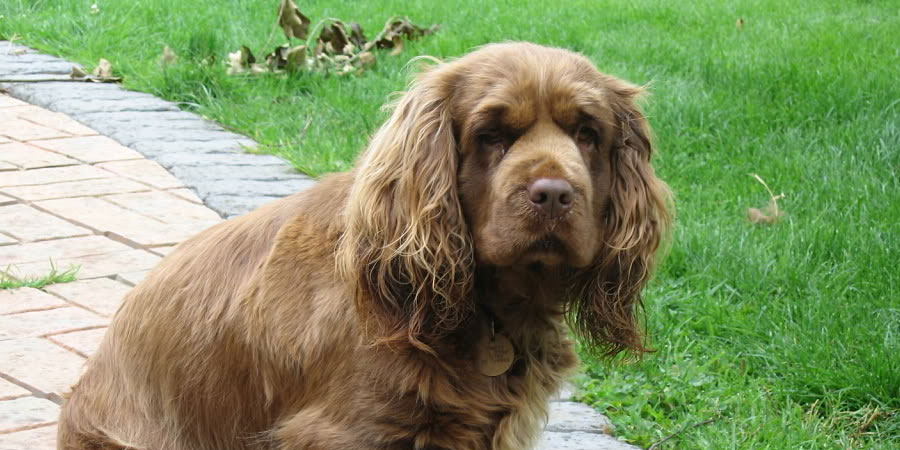

Sussex
Overview
The long, low, "rectangular" body, coupled with a muscular and rather massive physique, allows the Sussex to penetrate dense cover when hunting. Its movement is deliberate and rolling because of its short legs and comparatively wide body, a gait that emphasizes power over speed. The abundant body coat is flat or slightly wavy, giving protection from thorns. A distinctive feature is the long feather between the toes, which should be long enough to cover the toenails. The expression is somber and serious, even frowning, but the wagging tail belies its true nature. The Sussex tends to bark when hunting, which helps the hunter locate it in thick cover.
The Sussex spaniel tends to be less playful and demonstrative than other spaniels, with a lower energy level. This makes it better suited for city life, but it still appreciates the chance to take to the wilds and hunt up birds. It tends to bark when hunting, which has made it less popular with hunters than other breeds; some also bark or howl when not hunting. At home it is calm, steady and easygoing, although it may be aggressive to strange dogs. Its somber expression is misleading because it is quite cheerful.
| Size | Medium |
| Height | 15-16 inches (38-40 cm) |
| Weight | 40-44 pounds (18-20 kg) |
| Lifespan | 12-15 years |
| Colors | Brown Red |
| Origin | United Kingdom |
| Classification | Purebred |
| Good Lapcat |
| Good In Apartments |
The Sussex Spaniel will do okay in an apartment if it is sufficiently exercised. It is moderately active indoors and a small yard will be sufficient. This breed can live outdoors in temperate climates as long as it has warm shelter, but it generally does better as a house dog that also has access to a yard. |
| Good With Children |
Good with Kids: This is a suitable breed for kids and is known to be playful, energetic, and affectionate around them. |
| Good With Dogs |
|
| Good With Cats |
|
| Exercise Needs |
The Sussex Spaniel needs to be exercised regularly by taking it on a daily walk, where the dog is made to heel beside or behind the human holding the lead, as in a dog's mind the leader leads the way and that leader needs to be the human. Not only does the dog need a walk to satisfy its natural migration instinct, but it will quickly put on weight if it gets too little exercise. It enjoys retrieving and swimming and being outdoors in the woods and fields, but bear in mind it has a tendency to follow its nose. This breed may howl if not properly exercised and left alone. |
| Trainability |
Moderately Easy Training: Training won't require too much attention and effort, though it won't be easier than other breeds. Expect results to come gradually. |
| Affectionate |
|
| Playfulness |
|
| Grooming Requirements |
Moderate Maintenance: Grooming should be performed regularly to keep its fur in good shape. Occasional trimming or stripping needed. |
| Shedding |
Moderate Shedding: Expect this dog to shed regularly. Be prepared to vacuum often. Brushing will reduce shedding as well as make the coat softer and cleaner. |
| Vocalization/Barking |
Frequent |